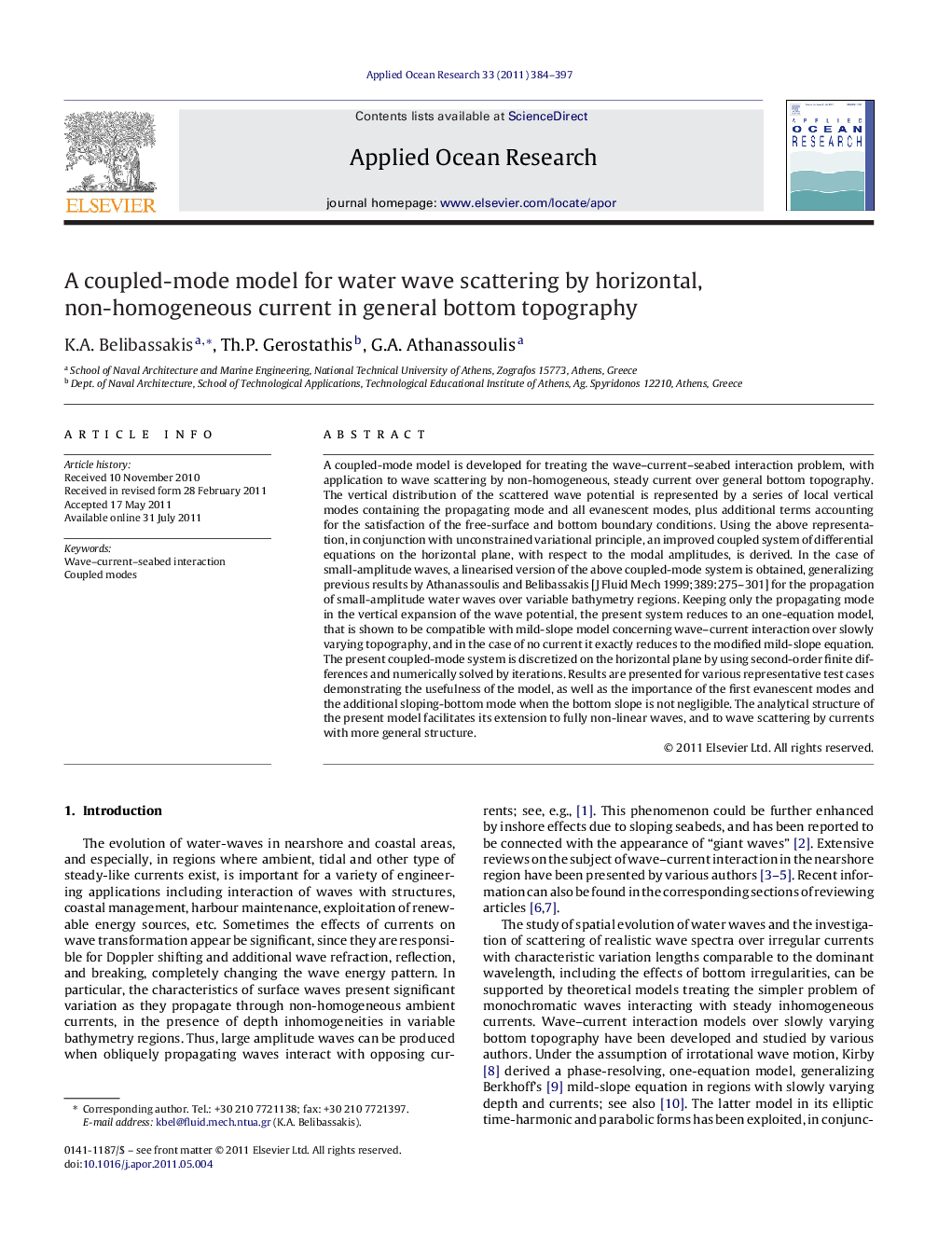| Article ID | Journal | Published Year | Pages | File Type |
|---|---|---|---|---|
| 1720343 | Applied Ocean Research | 2011 | 14 Pages |
A coupled-mode model is developed for treating the wave–current–seabed interaction problem, with application to wave scattering by non-homogeneous, steady current over general bottom topography. The vertical distribution of the scattered wave potential is represented by a series of local vertical modes containing the propagating mode and all evanescent modes, plus additional terms accounting for the satisfaction of the free-surface and bottom boundary conditions. Using the above representation, in conjunction with unconstrained variational principle, an improved coupled system of differential equations on the horizontal plane, with respect to the modal amplitudes, is derived. In the case of small-amplitude waves, a linearised version of the above coupled-mode system is obtained, generalizing previous results by Athanassoulis and Belibassakis [J Fluid Mech 1999;389:275–301] for the propagation of small-amplitude water waves over variable bathymetry regions. Keeping only the propagating mode in the vertical expansion of the wave potential, the present system reduces to an one-equation model, that is shown to be compatible with mild-slope model concerning wave–current interaction over slowly varying topography, and in the case of no current it exactly reduces to the modified mild-slope equation. The present coupled-mode system is discretized on the horizontal plane by using second-order finite differences and numerically solved by iterations. Results are presented for various representative test cases demonstrating the usefulness of the model, as well as the importance of the first evanescent modes and the additional sloping-bottom mode when the bottom slope is not negligible. The analytical structure of the present model facilitates its extension to fully non-linear waves, and to wave scattering by currents with more general structure.
► New coupled-mode system for wave–current–seabed interaction in variable bathymetry. ► Keeping only the propagating mode the system reduces to enhanced one-equation model. ► Extends modified mild-slope equation for wave–current in slowly varying topography. ► Facilitates extension to treat non-linear waves and currents with general structure.
